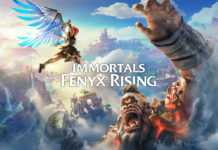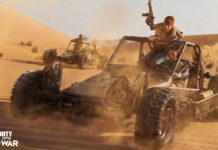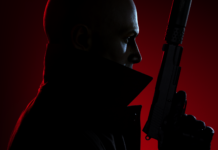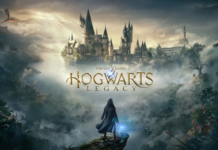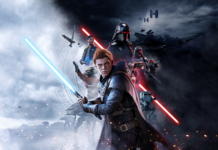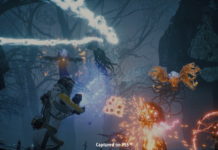AMN was recently invited to an exclusive press event at Activision’s headquarters in Santa Monica to get a full day of hands-on play with their upcoming lineups for the PlayStation 3, Xbox 360, PSP, DS, and Wii. Marvel: Ultimate Alliance was the first title that we played; and it seems to looking on track to provide a solid experience on each of the 360, PS3, and Wii consoles.
Marvel: Ultimate Alliance lets you form a team of four superheroes from the Marvel universe to do battle against a variety of thugs, robots, creatures, and super villains. There are more than 20 playable characters to select from when assembling your team, and they can be mixed and matched in countless ways to play off the strengths of each other. Certain combinations, like using all four members of the Fantastic Four in a single team, will gain special power-up bonuses; but the real strategy is in finding the combination of heroes that suits your play style best. We found that mixing some close range fighters like Wolverine or Colossus with flying characters like Storm and an elemental character such as Iceman or The Human Torch will give you the best results.
Because you can change your teams at marked points in the levels, special situations may encourage you to swap out a character or two for another to give yourself an advantage. One of the stages in the demo was full of enemies that had a resistance to ice attacks, so we had to make sure that Iceman sat that mission out.
Even though you are allowed to swap your characters out quite often, the game rewards you for sticking to a set team as much as possible. The longer your team stays together, you start to gain teamwork bonuses that help your characters to level up quicker and learn new abilities.
Your characters earn skill points as you defeat enemies and bust up destructible environments. These skill points can be spent on upgrades to abilities that your characters have learned. You can have these points spent automatically to ensure that they are dispersed evenly, or you can have them applied manually to better suit your play style.
The game’s battle systems on both the Xbox 360 and PlayStation 3 versions were nearly identical. While the PS3 offered a couple of differences in execution with its tilt features, it wasn’t used to a great extent. You have light attacks, strong attacks, combos, the ability to grab enemies, jumps, and special moves specific to each character. You can chain together combos by mixing light attacks and strong attacks that will often send your opponent flying up into air, dizzied, or slammed to the ground. Learning these combos is a necessity when you are faced with multiple enemies and you need to take them down quickly to avoid taking a lot of damage. Timing your attacks and combos to coincide with your team members helps you to gain damage bonuses and deal out massive amounts of pain quickly. Just as in the comic books that these characters are pulled from, teamwork is the key to properly defeating your enemy and ensuring success.
As mentioned earlier, special attacks are learned over time by gaining skill points. To use them, however, requires filling your special attack meter by defeating enemies and causing destruction. Once again, coordinating these special attacks with your teammates is a great strategy when trying to bring down enemies quickly.
At this point the gameplay in Ultimate Alliance is similar other top-view beat ‘em up games, but it manages to feel much more satisfying with all of the teamwork elements that are emphasized. The game is definitely leagues ahead of what can be found in its predecessors, such as X-Men Legends or Gauntlet in regards to satisfying combat, boss encounters, and variety of gameplay. One boss fight we played involved taking down an enemy that was at least 50 feet tall and made use of some QTE button presses to bring him down; similar to how enemies are finished off in God of War. The 360 versions used a series of button presses at certain times while the PS3 and Wii versions used a series of motions combined with buttons. According to the developers, more of these types of encounters can be expected in the final product of the game and are a great way at adding variety to the standard beat ‘em up formula.

What a flamer
The fighting styles and moves are faithful to the long-standing comic traditions. Captain American tosses his shield, Spider-Man makes use of his webs in a variety of ways, The Thing smashes everything, The Silver Surfer zips around the screen, and all other characters play in a way that you envision they would. The voiceover work for each hero is nicely done, even if it is a bit cheesy at times. But hey, aren’t all superhero quips cheesy by nature anyway?
Obviously, the Wii version controlled quite a bit differently than its Xbox 360 or PlayStation 3 counterparts. Every move could be executed by motion control using the Wii remote. What was interesting, however, is that the remote actually gave the player increased control over his team than what was offered in the other versions of the game. For example, instead of having to rely on a combination of button presses to execute an uppercut move, Wii users will simply need to flick the controller upwards. To slam an enemy you only need to flick the controller downwards. Leg sweeps, punches, and other moves are all pulled off easily and intuitively with the Wii remote.
Another big bonus that comes from the Wii’s unique control scheme is the ability to control the camera without having to take your thumb off of your attack buttons. While the PS3 and 360 versions use the right thumb stick to control the camera, Wii users only need to tilt the nunchuck attachment to the left or right to get the camera to rotate. While it’s a minor thing in theory, it’s a pretty nice perk that you’ll grow attached to rather quickly.
Graphically, the PlayStation 3 version looked the best of the three and sported some interesting distortion and blur effects that were absent from the Xbox 360 and Wii versions. Powerful attacks on the PS3 caused ripples of invisible energy to distort the area around the attack momentarily. When asked why this was absent from the 360 version, a developer told us that it was due to the PS3’s ability to handle shaders differently than what can be done on the 360 or Wii. Both the 360 and PS3 versions made use of impressive lighting techniques, particle effects, hi-res textures, and impressive character models while the Wii looks to be a mild step up from the current-gen efforts; though that is certainly to be expected at this point. Also, the PlayStation 3 version of the game was shown running in 1080p, which looked absolutely incredible and sharp while the Xbox 360 was running at a respectable 720p and the Wii version running at 480p. All three versions supported 16:9 widescreen modes.
At this stage of development the Wii and 360 versions held a steadier framerate than what was being shown on the PS3, but they are a bit farther along. The Wii and 360 versions were playing off of their test kits while the PS3 was still running on a development kit. Also with the PS3 version running in 1080p it was pushing the engine a bit harder. By release we were told to expect each version to be running at a stable framerate.
One wouldn’t expect the Wii version to hold up graphically against either the 360 or PS3 version, but when it was running in 16:9 widescreen with 480p it looked respectable. Wii users are simply going to have to accept that the perks are found in the gameplay and innovative use of the Wii remote rather than in graphical flair. Just don’t make the mistake of staring at a game in 720p or 1080p right before moving to 480p; the difference really is staggering.
The audio package that Ultimate Alliance sports is fairly impressive. There is tons of voiceover work that livens up the game as well as rich sounding explosions, weighty thuds, all sorts of ambient noises. The PS3 and 360 versions will both support digital sound while the Wii version is going to support Dolby Pro Logic II. Activision said that the development teams were intent on supporting whatever hardware features each console offered, and sound was no exception.
At this point it seems that the PlayStation 3 will probably emerge as the preferred version for those that want the best in graphics while others may be drawn to the online support found on the 360. The Wii version is impressive in its own right, but it lacks the graphical flair of the PS3 or 360 versions; but it definitely has an edge in the gameplay department. Much like the customizable aspects of the game, you’re going to have to make your final decision based on your personal style and taste.

This guy clearly wasn’t invited to the party.
Activision was kind enough to provide us with a playable build of the game for the 360, so look for an in-depth preview to explore some of the more intricate details of the battle system and features of the game soon.




